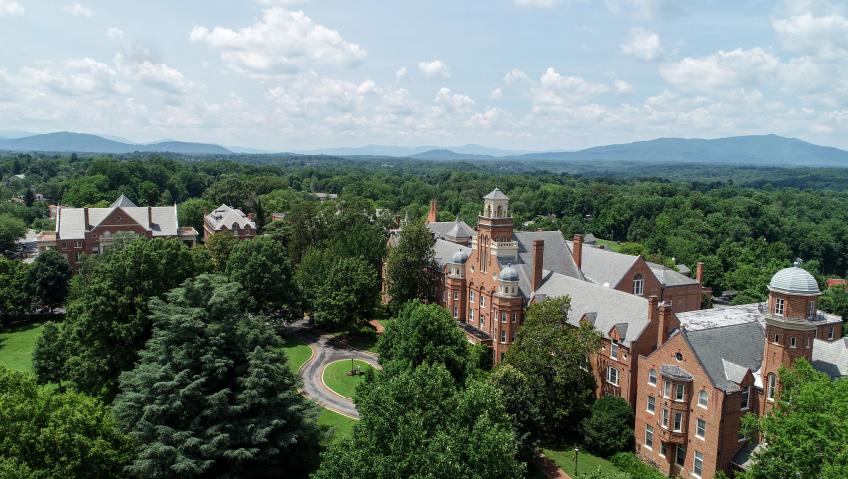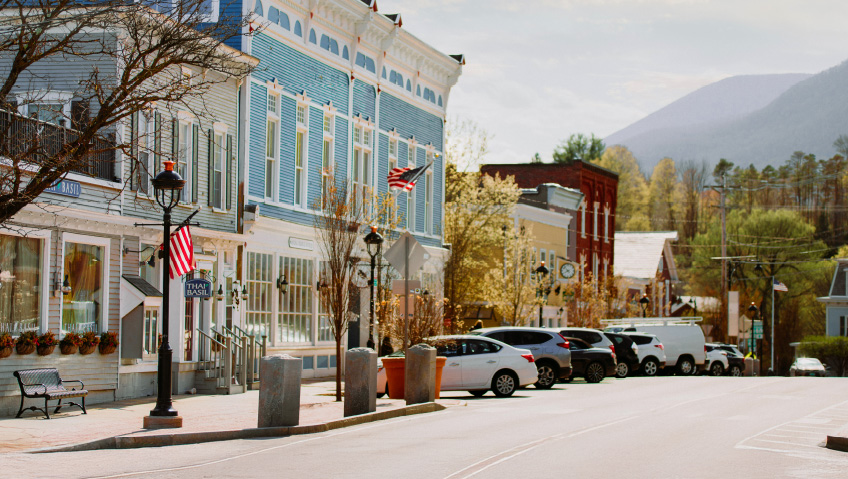In the rolling hills of Lynchburg, Virginia, a college with a storied past and a vibrant present continues to shape the future of higher education. Randolph College, originally founded as Randolph-Macon Woman’s College in 1891, has grown from its origins to become a coeducational liberal arts institution that embodies innovation, inclusivity, and academic excellence.
Under the leadership of President Sue Ott Rowlands, Randolph College has navigated a changing educational landscape with determination and creativity, building on its strong foundation of tradition while embracing the challenges and opportunities of the modern world. As the college celebrates its growth and evolution, it remains steadfast in its commitment to provide students with a transformative education that equips them for success.
When Randolph-Macon Woman’s College opened its doors in the late 19th century, it was a trailblazer in women’s education, offering opportunities that were not widely available to women at the time. The college’s founding mission was clear: to empower women through access to higher education and equip them with the knowledge and skills needed to lead and succeed in their communities.
For more than a century, the college remained a single-gender institution, fostering a close-knit, supportive environment that celebrated the accomplishments of women. In 2007, the college transitioned to coeducation, adopting the name Randolph College and welcoming men into its student body. While this shift represented a new chapter in the institution’s history, the college retained many of its traditions and values from its time as a women’s college.
Ott Rowlands reflects on this legacy with pride, noting that Randolph’s history of empowering women remains a central part of the school’s identity. “Our mission has always been about access and opportunity,” she explains. “Even as we’ve evolved, we’ve stayed true to our roots by ensuring that any qualified student who wants to be here can find their place at Randolph.”
At the heart of Randolph College’s educational philosophy is a commitment to innovation and student success. One of the college’s most distinctive features is its TAKE2 curriculum, an academic model that reimagines the traditional semester structure to better meet the needs of today’s students.
Under the TAKE2 model, the academic year is divided into four seven-week sessions, with students enrolling in just two courses per session. This approach allows for an intensive focus on a smaller number of subjects, enabling students to engage more deeply with the material and form stronger connections with their professors. Classes are held four days per week, with Wednesdays reserved as a “breather” day for students to catch up on assignments, participate in extracurricular activities, or seek additional academic support.
Ott Rowlands describes the benefits of this innovative model, noting that it helps students manage their time more effectively and stay on track academically. “By focusing on just two courses at a time, students can really dive into the material,” she says. “They’re not juggling multiple subjects at once, so they’re able to retain more information and perform better overall.”
The success of the TAKE2 curriculum is evident in the college’s academic outcomes. Randolph has seen an increase in the number of students qualifying for the Dean’s List, as well as improvements in retention rates. Professors also find it easier to provide targeted support to students, ensuring that no one falls through the cracks.
Randolph College’s commitment to academic innovation is matched by its dedication to fostering a vibrant and inclusive campus community. Over the past two years, the college has experienced a remarkable surge in enrollment, growing from 553 students to 816, a 48 percent increase in the size of the first-year class compared to the previous year. This growth is a testament to the appeal of Randolph’s unique offerings as well as its welcoming and supportive environment.
Approximately 75 percent of Randolph’s students hail from Virginia, and about 80 percent of the student body lives on campus, creating a close-knit residential community. The college’s diverse population includes students from 19 countries, and nearly 43 percent of the student body identifies as non-white. This diversity enriches the campus culture, fostering a sense of global awareness and mutual respect among students.
President Ott Rowlands highlights the importance of inclusivity in Randolph’s community, noting that the college aims to be a place where everyone feels valued and supported. “We’re a very diverse community,” she says. “We work collaboratively across the organization to ensure that our campus is a welcoming place for all.”
Randolph College’s recent growth has been fueled by a combination of innovative academic programs and strategic expansion efforts. Over the past two years, the college has introduced several new majors and areas of study, including computer science, film and video, mechatronics and robotics, cognitive science, integrative studies, mechanical engineering, cybersecurity, marine science, and criminal justice and criminology. These additions have broadened the college’s appeal, attracting students with a wide range of interests and career goals.
In addition to its academic offerings, Randolph has expanded its athletic programs, adding men’s volleyball, women’s STUNT (a competitive sport combining cheerleading and gymnastics), and men’s and women’s wrestling. These new opportunities have further enhanced the college’s ability to recruit and retain students, contributing to its ongoing success.
Ott Rowlands attributes the college’s growth to its ability to adapt to the changing needs of students and the broader educational landscape. “We’re not just growing in numbers,” she says. “We’re growing strategically, making sure that we’re offering programs and opportunities that meet the needs of today’s students.”
Indeed, to support its growing student population, Randolph College is making significant investments in its campus infrastructure. One of the most notable projects currently underway is the renovation of the college’s historic science building, an initiative that will provide state-of-the-art facilities for STEM education. The renovated building is set to open in 2025 and will house cutting-edge spaces for engineering, robotics, and mechatronics programs. The college is also planning expansions to its residence halls, dining facilities, and parking areas to accommodate the increasing number of students on campus.
In recent years, Randolph has also developed new off-campus facilities, including a dedicated athletic center for its wrestling programs and an expanded athletic center on campus. These enhancements underscore the college’s dedication to fostering a well-rounded student experience that includes opportunities for physical fitness and team building.
As Randolph College celebrates its successes, it remains mindful of the challenges facing higher education as a whole. Declining high school graduation rates and debates about the value of a college degree have created a difficult environment for many institutions, particularly small liberal arts colleges. However, Randolph has managed to navigate these challenges with resilience and creativity. Virginia’s relatively stable high school graduation rate has helped the college maintain a strong pipeline of in-state students, while its innovative programs and affordability have made it an attractive option for families seeking a high-quality education.
Ott Rowlands acknowledges the uncertainties facing higher education but remains optimistic about Randolph’s future. “We’re at a crossroads in this industry,” she says. “But I believe that Randolph is well-positioned to not only survive but thrive. Our commitment to innovation, inclusivity, and excellence sets us apart.”
As Randolph College looks to the future, it is guided by a strategic plan that prioritizes student success, career preparation, and campus culture. The college is placing a greater emphasis on internships, co-op programs, and other career readiness initiatives, ensuring that graduates are well-prepared to enter the workforce. At the same time, Randolph is committed to maintaining its financial stability and managing its growth carefully. The momentum generated by the college’s recent successes will carry it forward, enabling it to continue providing students with a transformative education for years to come.
Ott Rowlands emphasizes the importance of Randolph’s liberal arts foundation, noting that it equips students with the critical thinking skills and adaptability needed to excel in a rapidly changing world. “A liberal arts education provides a broad foundation that prepares students for whatever path they choose,” she says. “It’s a wonderful option for students who want to explore their passions and prepare for a meaningful career.”
Randolph College’s story is one of resilience, innovation, and community. From its roots as a pioneering women’s college to its current role as a thriving coeducational institution, Randolph has remained true to its mission of empowering students and transforming lives.
Under the leadership of Sue Ott Rowlands, the college continues to build on its legacy, embracing change while honoring its rich history. With its commitment to academic excellence, inclusivity, and strategic growth, Randolph College is poised to shape the future of higher education and inspire the leaders of tomorrow.






